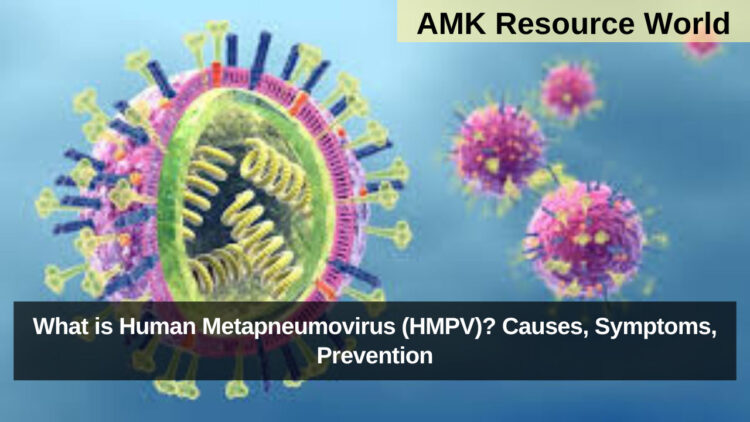Human Metapneumovirus (HMPV) is a respiratory virus that has gained significant attention in recent years due to its potential to cause severe respiratory infections, especially in vulnerable populations such as young children, the elderly, and individuals with weakened immune systems. This comprehensive guide explores the virus’s history, transmission, symptoms, treatment options, and preventive measures.
What is Human Metapneumovirus (HMPV)?
Human Metapneumovirus (HMPV) was first identified in 2001 in the Netherlands, but studies suggest it has been circulating globally for decades. The virus belongs to the Paramyxoviridae family, which also includes respiratory syncytial virus (RSV). HMPV primarily affects the respiratory tract, causing a range of illnesses from mild colds to severe pneumonia.
Transmission and Risk Factors
Human Metapneumovirus (HMPV) spreads through respiratory droplets when an infected person coughs or sneezes. It can also spread by touching contaminated surfaces and then touching the face, particularly the mouth, nose, or eyes. The virus is most prevalent during late winter and spring, coinciding with other seasonal respiratory viruses.
Certain groups are at a higher risk of developing severe HMPV infections, including Infants and young children under 5 years of age, Older adults, particularly those above 65 years, Individuals with chronic respiratory conditions like asthma or COPD, Immunocompromised individuals, such as cancer patients or organ transplant recipients.
Symptoms of HMPV Infection
Human Metapneumovirus (HMPV) symptoms can range from mild to severe, depending on the individual’s health and age.
Common symptoms include Fever and chills, Cough and nasal congestion, Shortness of breath or wheezing, Sore throat and fatigue.
In severe cases, symptoms may escalate to bronchitis or pneumonia, characterized by chest pain, difficulty breathing, and a persistent high fever.
These symptoms often mimic other respiratory infections like influenza or RSV, making laboratory testing essential for an accurate diagnosis.
Diagnosis of HMPV
Diagnosing HMPV requires specific laboratory tests, as its symptoms overlap with other respiratory illnesses. Diagnostic methods include:
PCR (Polymerase Chain Reaction) Test: The most reliable test to detect HMPV genetic material.
Antigen Detection Tests: These identify viral proteins but are less sensitive than PCR.
Serological Tests: Used to detect antibodies, though they are not typically helpful for acute diagnosis.
Healthcare providers may also perform chest X-rays or CT scans in severe cases to assess lung involvement.
Treatment Options
Currently, there is no specific antiviral treatment for Human Metapneumovirus (HMPV), Management focuses on relieving symptoms and supporting the patient’s respiratory function. Common treatment approaches include:
Supportive Care: Includes rest, hydration, and over-the-counter medications like acetaminophen or ibuprofen for fever and pain relief.
Oxygen Therapy: For patients with severe breathing difficulties.
Hospitalization: Required in severe cases involving pneumonia or significant oxygen deprivation.
Antibiotics are ineffective against HMPV since it is a viral infection. However, they may be prescribed if a secondary bacterial infection develops.
Prevention Strategies
Preventing HMPV requires measures similar to those for other respiratory infections. These include:
Hand Hygiene: Regularly washing hands with soap and water for at least 20 seconds.
Respiratory Etiquette: Covering the mouth and nose with a tissue or elbow when coughing or sneezing.
Disinfection: Cleaning frequently-touched surfaces such as doorknobs, toys, and phones.
Avoiding Crowds: Especially during peak seasons or if feeling unwell.
Vaccination Research: While no vaccine exists for HMPV yet, ongoing research is aimed at developing one.
Global Impact of HMPV
HMPV has a worldwide distribution and is responsible for a significant proportion of respiratory illnesses, particularly in young children and the elderly. Studies estimate that HMPV accounts for 5-15% of hospitalizations due to respiratory infections in these age groups. The virus’s impact is most evident in countries with limited healthcare resources, where severe cases can lead to higher mortality rates.
Human Metapneumovirus (HMPV) is an often-overlooked but significant contributor to respiratory illnesses worldwide. While it generally causes mild symptoms, its potential for severe complications in vulnerable populations underscores the importance of awareness, early diagnosis, and preventive measures. As research advances, the hope for effective treatments and vaccines grows, offering a promising future in the fight against HMPV.
By adopting simple hygiene practices and staying informed about emerging health threats, we can collectively reduce the impact of HMPV and safeguard public health.










































